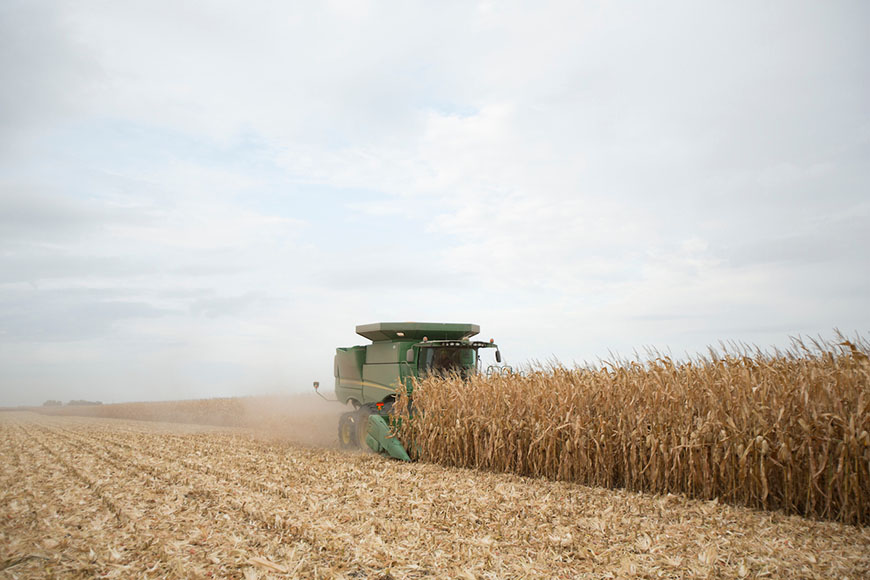Assessing Frost Damage

The impact frost has on corn and soybean plants depends on the growth stage of the plant and amount of exposure it has to freezing temperatures. In the Midwest, a killing frost, which means corn stalks or soybean stems are compromised, generally occurs between the third week of September and the middle of October.
With various levels of frost damage possible throughout the harvest season, it’s important to monitor crops closely and harvest in a timely manner to protect yield and crop quality.
Frost Before Physiological Maturity
If corn and soybean plants are exposed to freezing temperatures before they reach physiological maturity (black layer for corn and R8 for soybeans), frost damage can negatively affect yield, storability and salability.
Frost Following Physiological Maturity
If plants have reached physiological maturity, frost does not directly affect yield. However, it’s important to evaluate corn fields for standability, especially for issues caused by stalk rot. Once frost compromises a stalk, any natural disease protection is gone.
In contrast, frost can actually benefit soybean fields if it hits after physiological maturity, because it can cause drydown for weeds in the field that create combine issues.
Many factors play into the impact freezing temperatures have on crops this time of year, including field variability, row spacing and length of exposure to temperatures below 32°F. For more information about protecting corn and soybean fields from late-season frost damage, contact your local agronomist or WinField United representative.
With various levels of frost damage possible throughout the harvest season, it’s important to monitor crops closely and harvest in a timely manner to protect yield and crop quality.
Frost Before Physiological Maturity
If corn and soybean plants are exposed to freezing temperatures before they reach physiological maturity (black layer for corn and R8 for soybeans), frost damage can negatively affect yield, storability and salability.
- Storability: Corn and soybean crops suffering from frost damage tend to dry slower in the field and appear to be one to two percent drier than they actually are, according to many moisture testers. To avoid spoilage in storage, keep a close eye on these crops to ensure they have enough aeration so that condensation does not build up.
- Salability: For corn, frost can cause softer kernels, more breakage and lower test weights. In addition, frost-damaged corn can have lower digestibility when used in animal feed and isn’t as desirable for milling due to reduced starch, among other factors. Frost-damaged soybeans often have less extractable oil, poor oil quality and may turn rancid faster due to the presence of green soybeans.
Frost Following Physiological Maturity
If plants have reached physiological maturity, frost does not directly affect yield. However, it’s important to evaluate corn fields for standability, especially for issues caused by stalk rot. Once frost compromises a stalk, any natural disease protection is gone.
In contrast, frost can actually benefit soybean fields if it hits after physiological maturity, because it can cause drydown for weeds in the field that create combine issues.
Many factors play into the impact freezing temperatures have on crops this time of year, including field variability, row spacing and length of exposure to temperatures below 32°F. For more information about protecting corn and soybean fields from late-season frost damage, contact your local agronomist or WinField United representative.

